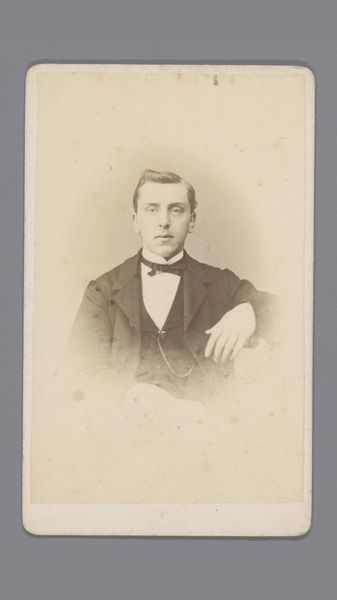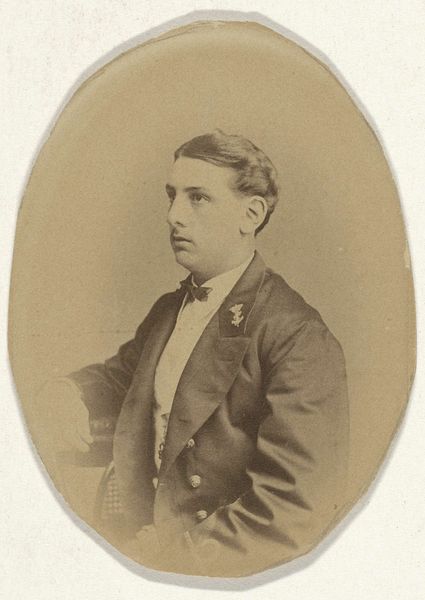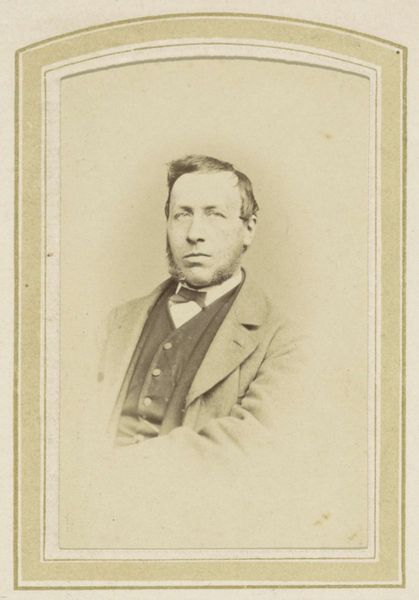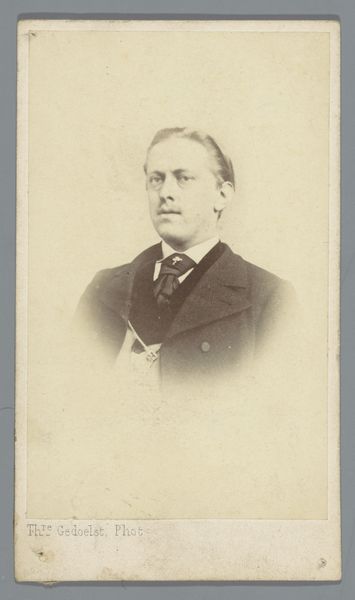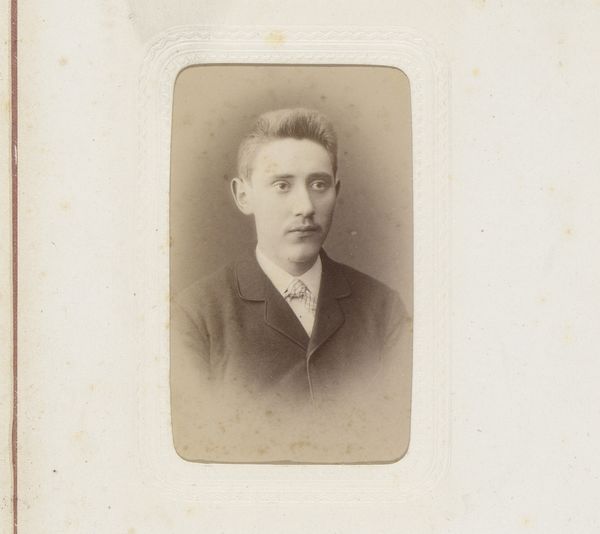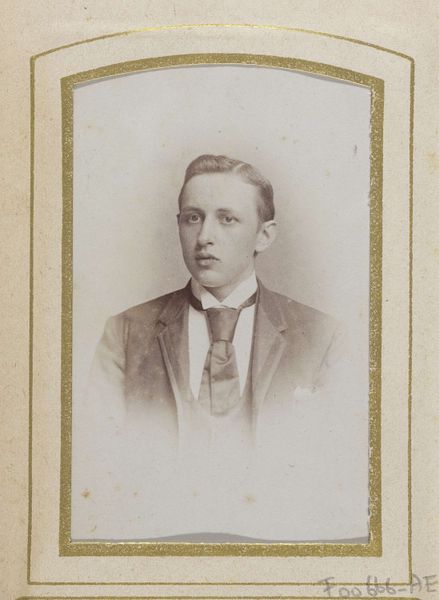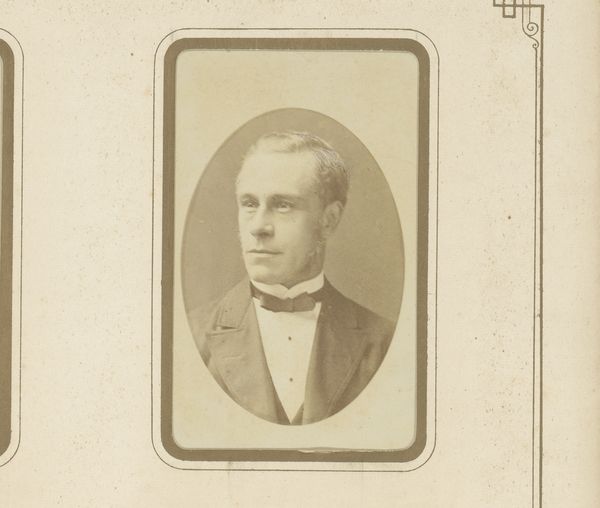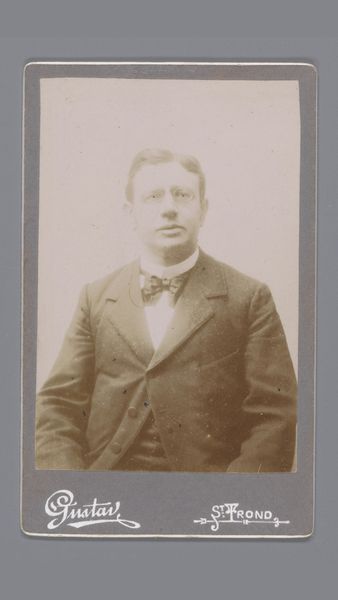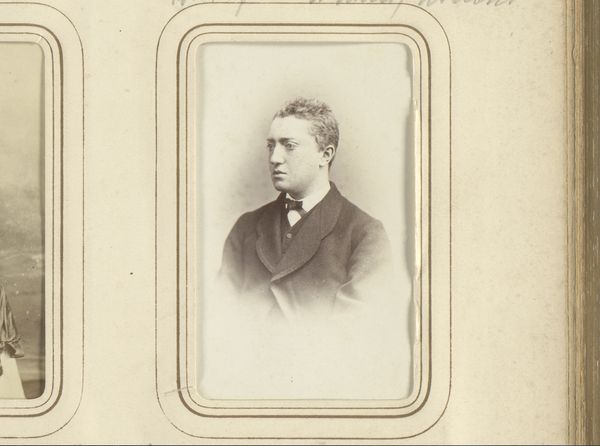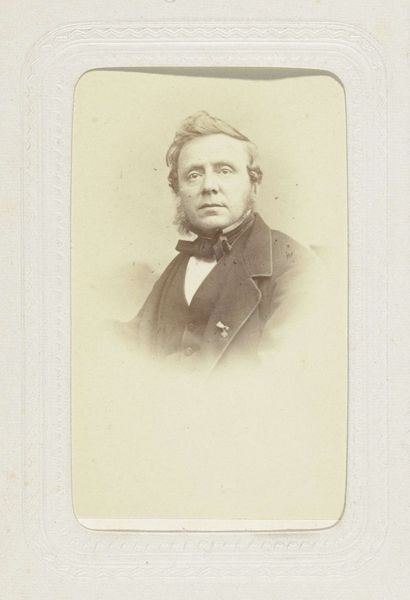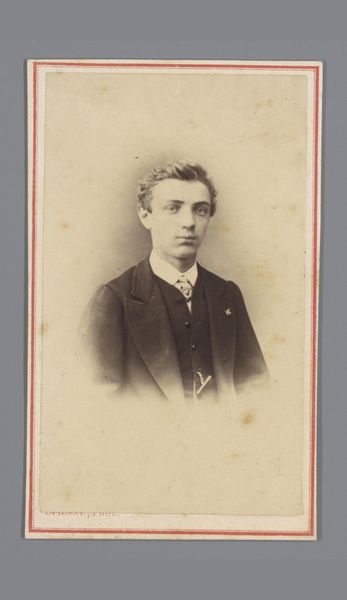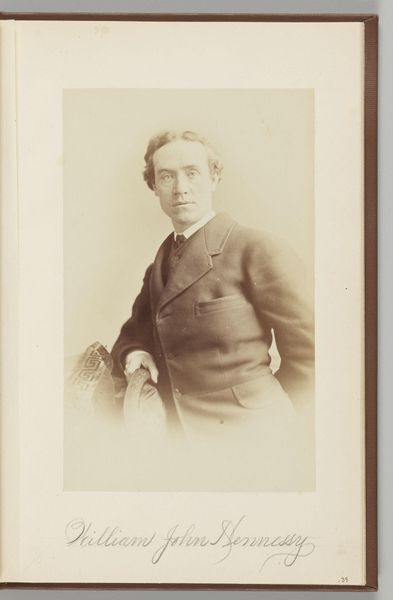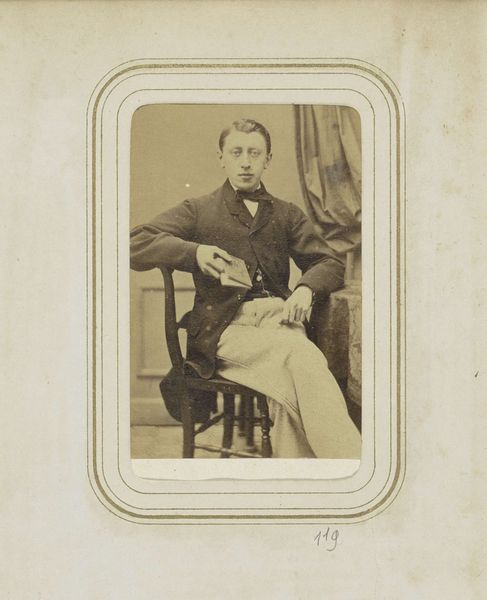
photography, albumen-print
#
portrait
#
aged paper
#
photography
#
historical photography
#
19th century
#
albumen-print
#
realism
Dimensions: height 93 mm, width 60 mm, height 105 mm, width 63 mm
Copyright: Rijks Museum: Open Domain
Curator: Here we have Maurits Verveer's "Portret van een man met een stropdas," a captivating albumen print dating from somewhere between 1861 and 1883. It currently resides here at the Rijksmuseum. Editor: My first impression is one of quiet dignity. The tonality is quite subdued, emphasizing the man's reserved expression and careful pose. There’s a strong sense of formality, a compositional stillness. Curator: Indeed. During this period, photography became more accessible to the middle classes, and portraits such as these were commissioned to project a specific social standing. The inclusion of a tie, relatively novel for the time, marks him as a modern gentleman. Editor: Semiotically, then, the tie functions almost like a signifier of middle-class ambition and modernity, subtly broadcasting the subject’s place in a shifting social landscape. Notice how the crisp, well-defined lines of his coat create a visual framework, a sort of stage upon which he presents himself. Curator: It is crucial to recognize that photographers such as Verveer played a key role in the construction of national identity during this period, presenting idealized versions of Dutch citizenry through portraiture. How might these images contribute to, or even contest, societal hierarchies and norms of representation? Editor: Well, the photographic technique itself flattens the three-dimensional space. That transforms this individual into a reproducible image that becomes a form of cultural currency—his identity circulating, viewed, interpreted. Look closely and the gentle blurring adds an aura of distance. Curator: Interesting point. To further examine the production value, let’s contemplate its display context: within the Rijksmuseum. How does being displayed within a historically esteemed collection influence its interpretation versus a private family collection? Editor: Excellent question. A museum display elevates the subject beyond just a personal remembrance, transforming the portrait into an artifact reflective of 19th-century bourgeois values, anxieties, and aesthetic conventions. The framing becomes just as crucial as the figure it contains. Curator: I agree. It highlights the complexities inherent in photographic portraiture and provides important perspectives to analyze cultural constructions of identity and class during that era. Thank you for your input. Editor: Thank you, I’ve certainly come to view this image with a fresh, informed perspective.
Comments
No comments
Be the first to comment and join the conversation on the ultimate creative platform.
